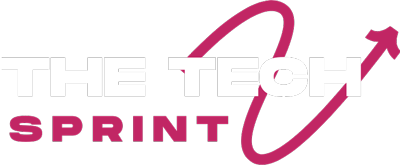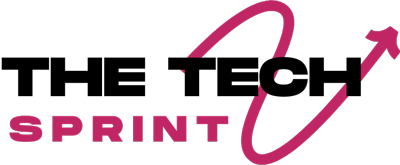In today’s fast-paced digital landscape, businesses are constantly seeking strategies for sustainable expansion and predictable revenue. The old model of one-time software purchases is rapidly fading, making way for a more flexible and customer-centric approach: Software as a Service (SaaS). If you’ve been grappling with inconsistent income, high customer churn, or simply looking for the blueprint to scale effectively, SaaS is for you.
Why SaaS Subscriptions Trump Traditional Software
Imagine a world where software updates are seamless, maintenance is handled for you, and you only pay for what you use. That’s the core promise of SaaS subscriptions, a stark contrast to the often cumbersome and costly traditional software licensing model.
This is driven by tangible benefits that cater to modern business demands:
- Lower Upfront Costs: SaaS eliminates large initial investments, making powerful tools accessible to businesses of all sizes, from startups to enterprises, with predictable monthly or annual payments.
- Continuous Updates & Support: SaaS providers automatically handle software updates, feature enhancements, and critical security patches, ensuring users always have the latest and most secure version without extra cost or effort.
- Scalability & Flexibility: Businesses can easily adjust their subscription levels, scaling up during periods of high demand and down during slower times, without long-term commitments or penalties. This dynamic adaptability is invaluable in today’s volatile markets.
- Enhanced Customer Experience: Since their revenue relies on ongoing relationships, SaaS providers prioritize top-notch customer support and continuous improvements based on user feedback, fostering stronger loyalty and a better user experience.
SaaS subscriptions a superior choice
| Feature | SaaS Subscription | Traditional Software Licensing |
| Payment Model | Recurring (monthly, yearly, or pay-per-use) | One-time upfront payment |
| Installation | No installation, accessed via web browser/app | Software installed on a local device |
| Updates & Maint. | Handled by provider (automatic) | User’s responsibility |
| Flexibility | Adjust plans as needs change | Fixed once purchased |
| Customer Support | Full support usually included | Often requires separate support plans |
| Storage & Comp. | No local storage or device compatibility needed | Requires storage space & device compatibility |
| Cost Management | Pay as you go, low upfront costs | High upfront cost, no flexibility |
| Scalability | Easy to scale up or down based on usage | Difficult to scale without new licenses |
Unpacking the SaaS Subscription Billing Model
At its heart, the SaaS subscription billing model defines how companies charge for their services and the associated payment schedules. It’s not just about a monthly fee; it’s a strategic framework that can significantly influence customer acquisition, retention, and overall revenue predictability.
This model allows for remarkable flexibility, adapting to diverse customer needs. For instance, tiered pricing enables easy scaling for users as their demands grow, while hybrid billing combines different models to fit specific requirements. Many businesses lean towards yearly plans for the stability they offer in revenue forecasting. The beauty of this model lies in its ability to generate steady, recurring income, freeing companies from the unpredictable spikes and drops of one-time sales.
The 8 Key SaaS Subscription Models Powering Growth
Choosing the right SaaS subscription model is crucial for aligning with your product, customer base, and long-term objectives. There’s no one-size-fits-all, but understanding the strengths and limitations of each can guide your strategic decision.
Here are 8 proven models, each with distinct advantages for fostering SaaS growth:
- Freemium Model: Offers a basic version for free, with advanced features requiring a paid subscription.
- Why choose it: Rapid user growth, low customer acquisition costs, high brand visibility.
- Limitations: Low conversion rates, ongoing costs for free users, unpredictable revenue.
- Example: Zoom (basic free calls, paid for extended features).
- Fixed Fee Model: Customers pay a consistent amount monthly, regardless of usage.
- Why choose it: Steady, predictable income for financial planning, simple for customers.
- Limitations: Limited revenue growth potential, rigid pricing.
- Example: Basecamp ($99/month flat fee).
- Tiered Pricing Model: Services are broken into several levels, each with different features and price points.
- Why choose it: Caters to a wide range of customers (startups to enterprises), boosts customer satisfaction by offering choice, encourages long-term retention as needs evolve.
- Limitations: Can confuse customers, complex to manage, potential cash flow issues for smaller businesses if not balanced.
- Example: HubSpot (different tiers for various business sizes and feature sets).
- Usage-Based Model (Pay-as-you-go): Customers pay based on how much they use the service.
- Why choose it: Highly flexible for fluctuating usage, low upfront costs, revenue directly tied to customer value.
- Limitations: Unpredictable costs for customers, requires clear communication to avoid frustration.
- Example: Amazon Web Services (AWS) charges based on resource consumption.
- Hybrid Model: Combines two or more models (e.g., tiered with fixed fees or a base fee plus usage-based).
- Why choose it: Offers stability from fixed payments with scalability from usage, fits diverse customer needs, increases satisfaction as it adapts to growth.
- Limitations: Can be complex for customers to understand, potential misalignment between cost and perceived value if not transparent.
- Example: Adobe Creative Cloud (tiered subscriptions with individual user options and usage elements).
- Pay-per-Seat Model: Customers pay based on the number of users accessing the service.
- Why choose it: Scalable as teams grow, predictable budgeting with fixed user fees, straightforward pricing.
- Limitations: Costs can increase rapidly with more users, potentially straining cash flow if not managed.
- Example: Microsoft 365 (charges a fixed price per user).
- Performance-Based Model: Customers pay based on the tangible results or outcomes achieved through the software.
- Why choose it: Aligns pricing directly with customer value, builds loyalty, highly flexible.
- Limitations: Requires robust data tracking for accurate measurement, can be complex to implement and define metrics.
- Example: HubSpot AI Content Assistant (customers pay for tools that drive marketing success).
Choosing Your SaaS Pricing Blueprint
Selecting the ideal SaaS pricing model isn’t just a financial decision; it’s a fundamental strategic choice that dictates your business’s trajectory. It involves more than just crunching numbers—it’s about deeply understanding your market, your customers, and your product’s unique value proposition.
Consider these critical factors when making your choice:
- Know Your Market: Who are your target customers? Startups, SMEs, or large enterprises? Their budget and needs should heavily influence your model.
- Understand Customer Needs: Are they seeking basic functionality or advanced tools? Models like freemium or tiered pricing offer flexibility for diverse user requirements.
- Competitor Analysis: What are your rivals doing? Learn from their successes and failures, and identify opportunities to differentiate your pricing.
- Evaluate Product Value: Does your product solve a significant pain point or offer exceptional value? A strong value proposition can justify premium pricing.
- Set Clear Revenue Goals: Do you prioritize predictable recurring revenue, rapid user adoption, or maximizing customer lifetime value? Your financial objectives should guide your pricing model.
- Factor in Customer Lifetime Value (CLTV): Choose a model that encourages long-term engagement and maximizes the total revenue you can expect from a customer over their relationship with your business.
Conclusion
The proliferation of subscription-based software models signifies a monumental shift in how businesses operate and scale. They are no longer just a payment system but a cornerstone for securing lasting success. By prioritizing flexibility, scalability, and relentless innovation focused on user needs, companies leveraging subscription software can establish robust recurring revenue streams, deepen customer relationships through continuous value delivery, and maintain a competitive edge.
Whether you’re exploring platform-based, integrated, or hybrid solutions, the key is to match your chosen model with your evolving business strategy and the dynamic expectations of modern users. Embracing these SaaS is not merely about adopting a new billing method; it’s about investing in a foundation for future innovation, stronger customer loyalty, and ultimately, unparalleled SaaS growth.
What steps will your business take to leverage the power of subscription software for its next phase of growth?
Frequently Asked Questions (FAQs)
What is SaaS and how does it drive business growth?
SaaS (Software as a Service) is a software delivery model where applications are hosted by a third-party provider and made available to customers over the internet on a subscription basis. It drives growth by offering scalability, predictable revenue, lower upfront costs for users, and continuous updates.
How do SaaS subscription models differ from traditional software?
SaaS subscriptions involve recurring payments for web-based access, with updates and maintenance handled by the provider. Traditional software typically requires a one-time upfront payment, local installation, and user responsibility for updates.
What are the main types of SaaS subscription models?
Common SaaS subscription models include Freemium, Fixed Fee, Tiered Pricing, Usage-Based, Hybrid, Pay-per-Seat, Pay-as-you-Go, and Performance-Based models.
Which SaaS subscription model is best for a new business?
The best model depends on your product, target market, and revenue goals. Freemium can be great for rapid user acquisition, while a Fixed Fee model offers revenue predictability for smaller scales.
How does choosing the right SaaS pricing model impact customer retention?
An optimal pricing model aligns with customer value and needs, reducing confusion and fostering satisfaction. This leads to higher customer lifetime value and lower churn rates.
Can a business change its SaaS subscription model over time?
Yes, many SaaS businesses evolve their pricing and subscription models as they grow, learn more about customer behavior, and adapt to market demands. Flexibility is a key advantage of SaaS.
What is a hybrid SaaS subscription model?
A hybrid model combines elements of two or more distinct pricing strategies, such as a base fixed fee combined with usage-based charges or tiered plans with per-user pricing, offering both stability and flexibility.
Why is predictable revenue important for modern businesses?
Predictable recurring revenue, a hallmark of the SaaS model, allows businesses to forecast finances more accurately, invest confidently in product development, marketing, and expansion, and achieve sustainable long-term growth.


